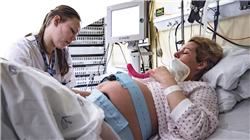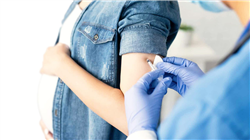University certificate
The world's largest faculty of nursing”
Introduction to the Program
Learn about the latest advances in SARS CoV2 infection, circulatory alterations or sexually transmitted diseases in the Obstetric Emergency Department"

When non-obstetric complications are dealt with in the Emergency Department in the same field, it is important to have effective and rapid precision, based on a good, up-to-date knowledge base, in order to provide an accurate diagnosis that avoids greater difficulties in the future.
Part of this responsibility falls on the nursing professionals who work in this area, so they must modernize and deepen their knowledge in line with the latest advances in fields such as infections during pregnancy or the most delicate special situations.
TECH Global University has brought together a team of experts with extensive experience in dealing with all types of pathologies, bringing together in this program both theoretical and practical teaching material of high quality. The nurses will have access to a myriad of contents ranging from out-of-hospital childbirth or drug addiction in pregnancy to heart disease and circulatory disorders possible in pregnancy.
All this in a 100% online program, with no fixed classes or pre-established schedules. It is the nurses who have the freedom to download the entire syllabus from any device with an Internet connection. Therefore studying at their own pace, being able to combine it with other activities and responsibilities both personal and professional.
You will not have to sacrifice your personal or work life thanks to the great flexibility you will have in this TECH program"
This Postgraduate diploma in Non- Obstetric Pathologies,Infections and Special Situations in Obstetric and Neonatal Emergencies for Nursing contains the most complete and up-to-date scientific program on the market. The most important features include:
- The development of case studies presented by experts in Obstetric and Neonatal Emergencies
- The graphic, schematic, and practical contents with which they are created, provide scientific and practical information on the disciplines that are essential for professional practice
- Practical exercises where self-assessment can be used to improve learning
- Its special emphasis on innovative methodologies
- Theoretical lessons, questions to the expert, debate forums on controversial topics, and individual reflection assignments
- Content that is accessible from any fixed or portable device with an Internet connection
Get up to speed with an extensive syllabus that delves into the importance of endocrine system diseases and autoimmune diseases during the gestational period"
The program’s teaching staff includes professionals from the sector who contribute their work experience to this educational program, as well as renowned specialists from leading societies and prestigious universities.
The multimedia content, developed with the latest educational technology, will provide the professional with situated and contextual learning, i.e., a simulated environment that will provide immersive education programmed to learn in real situations.
This program is designed around Problem-Based Learning, whereby the professional must try to solve the different professional practice situations that arise during the academic year For this purpose, the students will be assisted by an innovative interactive video system created by renowned and experienced experts.
Incorporate the most relevant advances in chemotherapy drugs in pregnancy, transplantation, antepartum fetal death and pseudocyesis into your daily practice"

Join the world's largest online academic institution, TECH, where you will find the most developed and comprehensive scientific content"
Why study at TECH?
TECH is the world’s largest online university. With an impressive catalog of more than 14,000 university programs available in 11 languages, it is positioned as a leader in employability, with a 99% job placement rate. In addition, it relies on an enormous faculty of more than 6,000 professors of the highest international renown.

Study at the world's largest online university and guarantee your professional success. The future starts at TECH”
The world’s best online university according to FORBES
The prestigious Forbes magazine, specialized in business and finance, has highlighted TECH as “the world's best online university” This is what they have recently stated in an article in their digital edition in which they echo the success story of this institution, “thanks to the academic offer it provides, the selection of its teaching staff, and an innovative learning method aimed at educating the professionals of the future”
A revolutionary study method, a cutting-edge faculty and a practical focus: the key to TECH's success.
The most complete study plans on the university scene
TECH offers the most complete study plans on the university scene, with syllabuses that cover fundamental concepts and, at the same time, the main scientific advances in their specific scientific areas. In addition, these programs are continuously being updated to guarantee students the academic vanguard and the most in-demand professional skills. In this way, the university's qualifications provide its graduates with a significant advantage to propel their careers to success.
TECH offers the most comprehensive and intensive study plans on the current university scene.
A world-class teaching staff
TECH's teaching staff is made up of more than 6,000 professors with the highest international recognition. Professors, researchers and top executives of multinational companies, including Isaiah Covington, performance coach of the Boston Celtics; Magda Romanska, principal investigator at Harvard MetaLAB; Ignacio Wistumba, chairman of the department of translational molecular pathology at MD Anderson Cancer Center; and D.W. Pine, creative director of TIME magazine, among others.
Internationally renowned experts, specialized in different branches of Health, Technology, Communication and Business, form part of the TECH faculty.
A unique learning method
TECH is the first university to use Relearning in all its programs. It is the best online learning methodology, accredited with international teaching quality certifications, provided by prestigious educational agencies. In addition, this disruptive educational model is complemented with the “Case Method”, thereby setting up a unique online teaching strategy. Innovative teaching resources are also implemented, including detailed videos, infographics and interactive summaries.
TECH combines Relearning and the Case Method in all its university programs to guarantee excellent theoretical and practical learning, studying whenever and wherever you want.
The world's largest online university
TECH is the world’s largest online university. We are the largest educational institution, with the best and widest online educational catalog, one hundred percent online and covering the vast majority of areas of knowledge. We offer a large selection of our own degrees and accredited online undergraduate and postgraduate degrees. In total, more than 14,000 university degrees, in eleven different languages, make us the largest educational largest in the world.
TECH has the world's most extensive catalog of academic and official programs, available in more than 11 languages.
Google Premier Partner
The American technology giant has awarded TECH the Google Google Premier Partner badge. This award, which is only available to 3% of the world's companies, highlights the efficient, flexible and tailored experience that this university provides to students. The recognition as a Google Premier Partner not only accredits the maximum rigor, performance and investment in TECH's digital infrastructures, but also places this university as one of the world's leading technology companies.
Google has positioned TECH in the top 3% of the world's most important technology companies by awarding it its Google Premier Partner badge.
The official online university of the NBA
TECH is the official online university of the NBA. Thanks to our agreement with the biggest league in basketball, we offer our students exclusive university programs, as well as a wide variety of educational resources focused on the business of the league and other areas of the sports industry. Each program is made up of a uniquely designed syllabus and features exceptional guest hosts: professionals with a distinguished sports background who will offer their expertise on the most relevant topics.
TECH has been selected by the NBA, the world's top basketball league, as its official online university.
The top-rated university by its students
Students have positioned TECH as the world's top-rated university on the main review websites, with a highest rating of 4.9 out of 5, obtained from more than 1,000 reviews. These results consolidate TECH as the benchmark university institution at an international level, reflecting the excellence and positive impact of its educational model.” reflecting the excellence and positive impact of its educational model.”
TECH is the world’s top-rated university by its students.
Leaders in employability
TECH has managed to become the leading university in employability. 99% of its students obtain jobs in the academic field they have studied, within one year of completing any of the university's programs. A similar number achieve immediate career enhancement. All this thanks to a study methodology that bases its effectiveness on the acquisition of practical skills, which are absolutely necessary for professional development.
99% of TECH graduates find a job within a year of completing their studies.
Postgraduate Diploma in Non-Obstetric Pathologies, Infections and Special Situations in Obstetric and Neonatal Emergencies for Nursing.
Non-obstetric pathologies, infections and special situations in obstetric and neonatal emergencies are medical situations that can occur during the pregnancy, delivery and postpartum process. Some of the most common non-obstetric conditions include diabetes, hypertension, heart disease, respiratory disease and kidney disease. Some of the most common infections include urinary tract infections, sexually transmitted infections and human immunodeficiency virus (HIV) infection. Special situations include premature deliveries, twins or complications of newborn babies.
It is important that nursing professionals working in obstetric and neonatal emergencies are trained to detect and treat these pathologies, infections and special situations to provide the best possible care for the mother and newborn. These professionals must have a solid knowledge of physiology, pharmacology and diagnosis to be able to adequately manage these situations.
Infections can be especially dangerous during pregnancy because some infections can be transmitted to the fetus and cause congenital malformations or even fetal death. Nursing professionals must be trained to detect these infections and treat them in a timely manner to minimize the risks to mother and baby.
Non-obstetric pathologies, infections and special situations are important complications that can occur during pregnancy and delivery. Nursing professionals working in obstetric and neonatal emergencies must be prepared to manage these situations and provide specialized care to ensure a favorable outcome for both mother and newborn.







